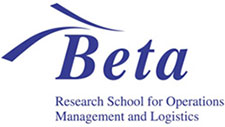On Thursday, June 21, 2018, Joni Driessen will defend his PhD thesis “Life Cycle Costs Minimization for Capital Goods”.
This thesis has been supervised by prof.dr.ir. G.J.J.A.N. van Houtum and dr.ir. J.J. Arts.
The ceremony will take place in the Collegezaal 5 of the Auditorium at the Eindhoven University of Technology, at 16:00 hrs.
Abstract
Capital goods are crucial for many companies to render their services or to manufacture their products. Downtime of such capital intensive systems leads to large revenue losses and customer dissatisfaction. In order to avoid unnecessary downtime, the users of such systems close service contracts with the original equipment manufacturer (OEM). As a consequence, the OEM is responsible for the majority of the system’s life cycle.
This thesis takes the perspective of an OEM and deals with questions that cover various parts of the life cycle for which the OEM is responsible: What is the value of considering spare parts for commonality decisions, reliability decisions, and life cycle costs? What are good maintenance modules (line replaceable units) that trade off the purchase/repair cost and the replacement cost due to downtime? What is a good strategy to implement a component upgrade that modifies a system, given that the OEM has spare parts on stock of the old component? To support these decisions, mathematical decision support models are developed that provide structural insights, managerial insights, and solution approaches. We find that considering spare parts can result in substantially different commonality and reliability decisions. Furthermore, the life cycle costs can be reduced up to 10% if spare parts are considered. Secondly, we propose a model that enables the OEM to determine optimal maintenance modules and we present two equivalent formulations for solving this model. Finally, we find that there does not exist a single optimal implementation strategy for upgrading components and the best implementation strategy depends on how much extra profit an upgrade can generate and/or how much an upgrade can reduce the failure rate of the system.
